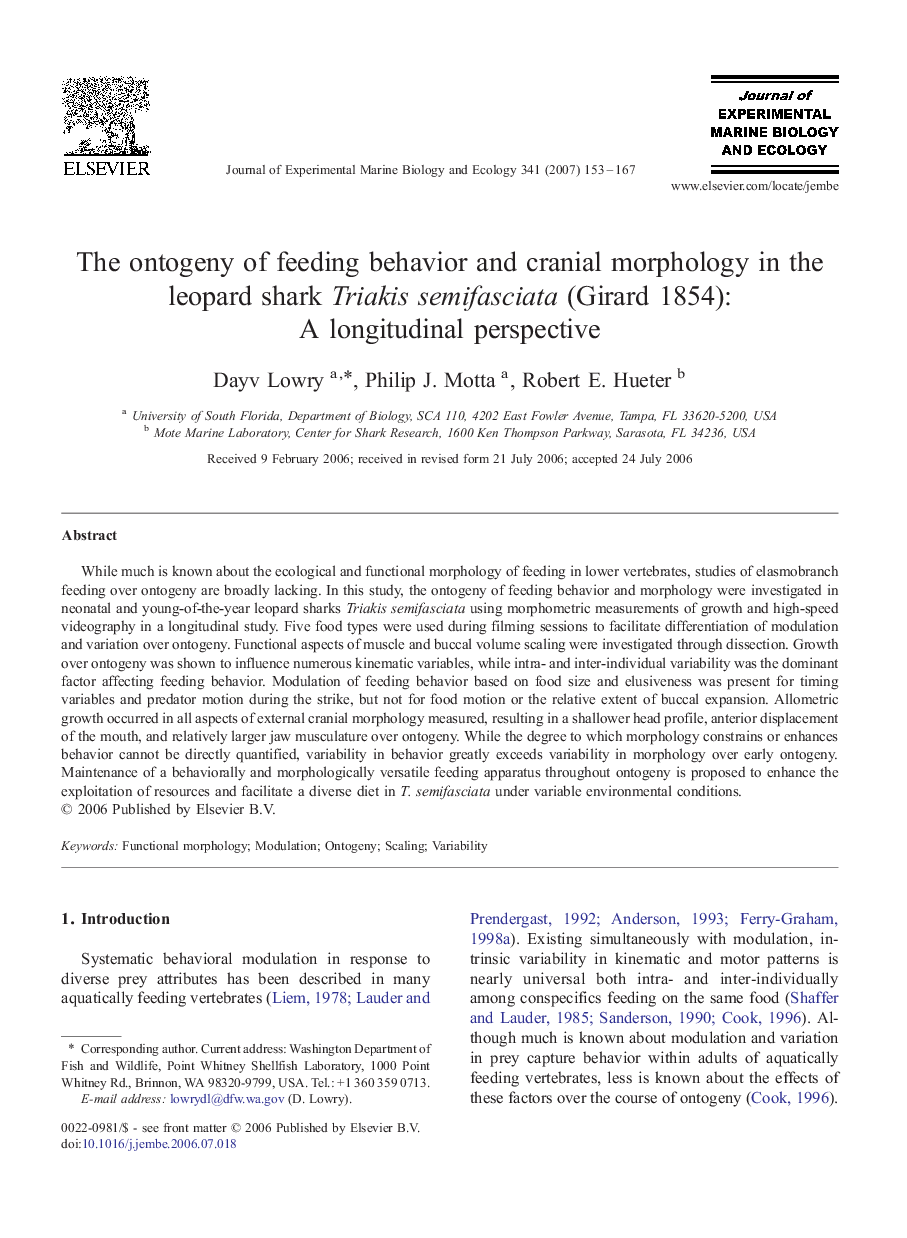| Article ID | Journal | Published Year | Pages | File Type |
|---|---|---|---|---|
| 4397758 | Journal of Experimental Marine Biology and Ecology | 2007 | 15 Pages |
While much is known about the ecological and functional morphology of feeding in lower vertebrates, studies of elasmobranch feeding over ontogeny are broadly lacking. In this study, the ontogeny of feeding behavior and morphology were investigated in neonatal and young-of-the-year leopard sharks Triakis semifasciata using morphometric measurements of growth and high-speed videography in a longitudinal study. Five food types were used during filming sessions to facilitate differentiation of modulation and variation over ontogeny. Functional aspects of muscle and buccal volume scaling were investigated through dissection. Growth over ontogeny was shown to influence numerous kinematic variables, while intra- and inter-individual variability was the dominant factor affecting feeding behavior. Modulation of feeding behavior based on food size and elusiveness was present for timing variables and predator motion during the strike, but not for food motion or the relative extent of buccal expansion. Allometric growth occurred in all aspects of external cranial morphology measured, resulting in a shallower head profile, anterior displacement of the mouth, and relatively larger jaw musculature over ontogeny. While the degree to which morphology constrains or enhances behavior cannot be directly quantified, variability in behavior greatly exceeds variability in morphology over early ontogeny. Maintenance of a behaviorally and morphologically versatile feeding apparatus throughout ontogeny is proposed to enhance the exploitation of resources and facilitate a diverse diet in T. semifasciata under variable environmental conditions.
